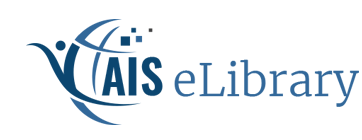Start Date
14-12-2012 12:00 AM
Description
Many organizations adopt information technologies to make intelligent decisions during operations. Time-series data plays a crucial role in supporting such decision making processes. Though current studies on time-series based decision making provide reasonably well results, the anomaly detection essence underling most of the scenarios and the plenitude of unlabeled data are largely overlooked and left unexplored. We argue that by using multivariate forecasting and unsupervised feature learning, these two important research gaps could be filled. We carried out two experiments in this study to testify our approach and the results showed that decision support performance was significantly improved. We also proposed a novel framework to integrate the two methods so that our approach may be generalized to a larger problem domain. We discussed the advantages, the limitations and the future work of our study. Both practical and theoretical contributions were also discussed in the paper.
Recommended Citation
Wang, Jiawei; Ren, Jimmy SJ; Wang, Wei; Li, Xin; Li, Qiudan; and Liao, Stephen S. Y., "When Multivariate Forecasting Meets Unsupervised Feature Learning - Towards a Novel Anomaly Detection Framework for Decision Support" (2012). ICIS 2012 Proceedings. 34.
https://aisel.aisnet.org/icis2012/proceedings/ResearchInProgress/34
When Multivariate Forecasting Meets Unsupervised Feature Learning - Towards a Novel Anomaly Detection Framework for Decision Support
Many organizations adopt information technologies to make intelligent decisions during operations. Time-series data plays a crucial role in supporting such decision making processes. Though current studies on time-series based decision making provide reasonably well results, the anomaly detection essence underling most of the scenarios and the plenitude of unlabeled data are largely overlooked and left unexplored. We argue that by using multivariate forecasting and unsupervised feature learning, these two important research gaps could be filled. We carried out two experiments in this study to testify our approach and the results showed that decision support performance was significantly improved. We also proposed a novel framework to integrate the two methods so that our approach may be generalized to a larger problem domain. We discussed the advantages, the limitations and the future work of our study. Both practical and theoretical contributions were also discussed in the paper.

